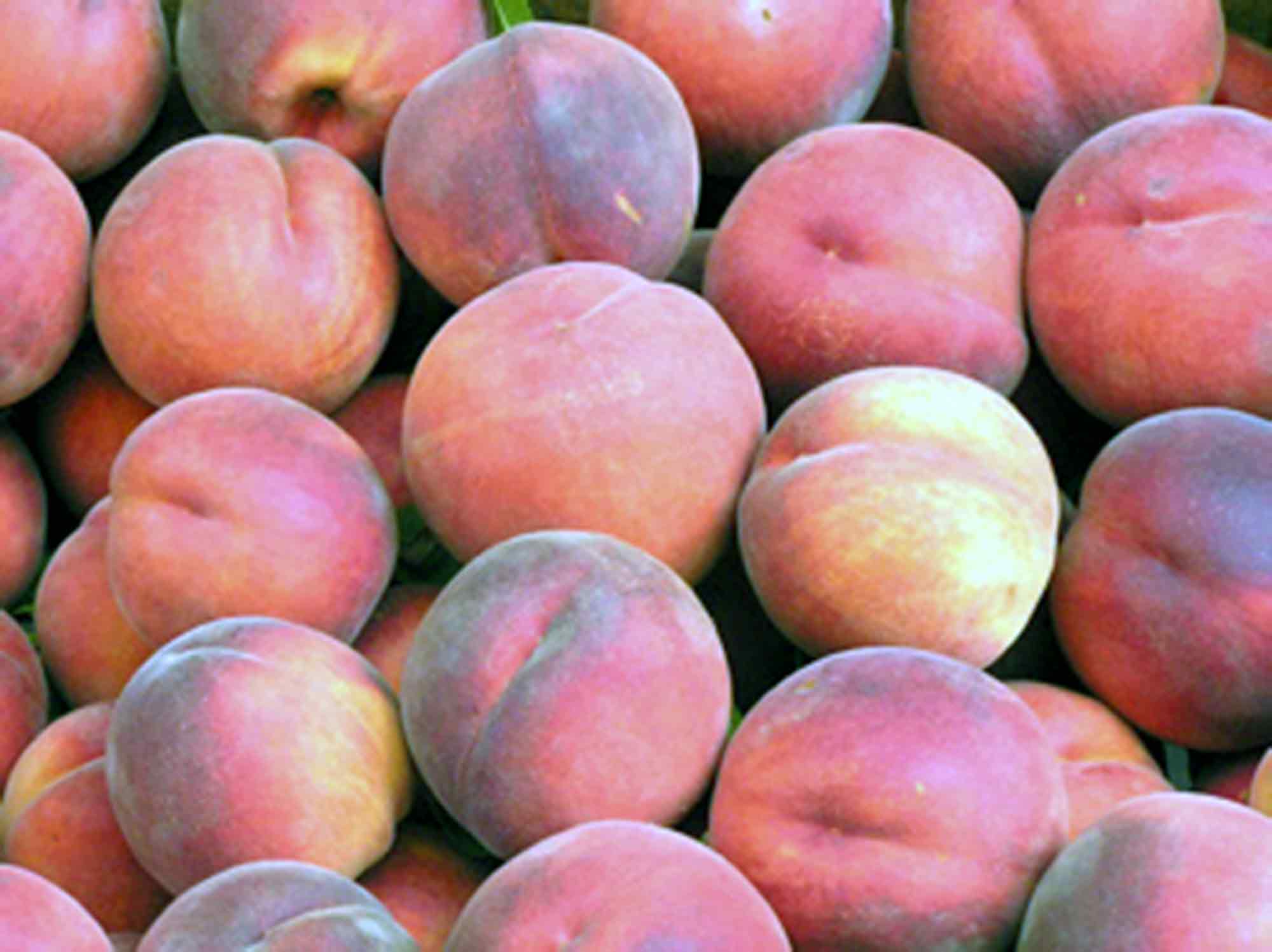
Peach tree, nectarine tree: the best varieties
Round or flat fruits, slightly smooth or downy — which will win you over?
Summary
The Peach and Nectarine trees (Prunus persica) are fruit trees of family Rosaceae cultivated for their edible fruits: peaches and nectarines. These trees have everything to recommend them: self-fertile, meaning they need no pollinator trees nearby to set fruit, beautiful white, pink to red flowers and delicious fruit. They bring a lot of charm to a garden or orchard. Some dwarf varieties can also be grown in pots to enjoy on a balcony or terrace. The quintessential summer fruit, they delight young and old and suit every palate: smooth skin or fuzzy skin, yellow-fleshed or white-fleshed, sometimes even blood-fleshed, round fruits or flat fruits… Discover our selection of the 10 best varieties.
→ Learn more in our full factsheet Peach and nectarine: planting, pruning and care and in our advice guide: How to choose a peach or nectarine tree?
Nectarine 'Fantasia': sweet and juicy
Early-ripening, Nectarine ‘Fantasia’ reveals beautiful pink flowers from mid-March. Foliage has a gentle almond scent. In August, large fleshy fruits appear. Nectarines have a smooth, glossy red-to-orange skin about 8 cm in diameter, with yellow, sweet, juicy and very fragrant flesh. They are delicious eaten fresh or cooked, in sweet or savoury dishes. This variety prefers warm, sunny and sheltered positions. It favours light, rich and deep soils. Note, although hardy, it can be sensitive to spring frost, which may destroy flowering or developing fruit.
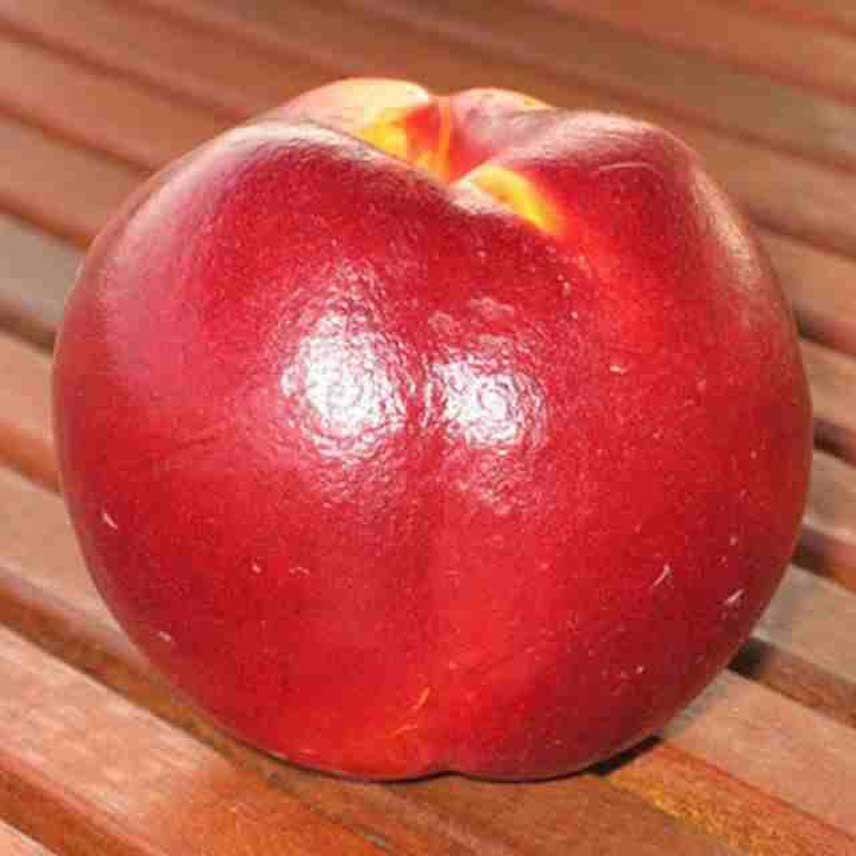
Nectarine ‘Fantasia’
Note: This nectarine holds up very well to cooking but is above all delicious eaten fresh.
You may also read
Peach and nectarine: planting, pruning and maintenanceNectarine 'Honey Kist' — incomparable
Hardy, nectarine tree Nectarine ‘Honey Kist’ produces an abundance of large, flavoursome fruit from July. Its nectarines, large fruits of around 8 cm, with yellow flesh and a deep dark red skin, have excellent eating quality: firm and sweet, with a pronounced flavour. This variety has a medium habit (2 m spread by 3 m height), and offers excellent resistance to diseases, notably to leaf curl. ‘Honey Kist’ variety poorly tolerates excess water and drafts; place it preferably sheltered from cold winds and in a sunny position.
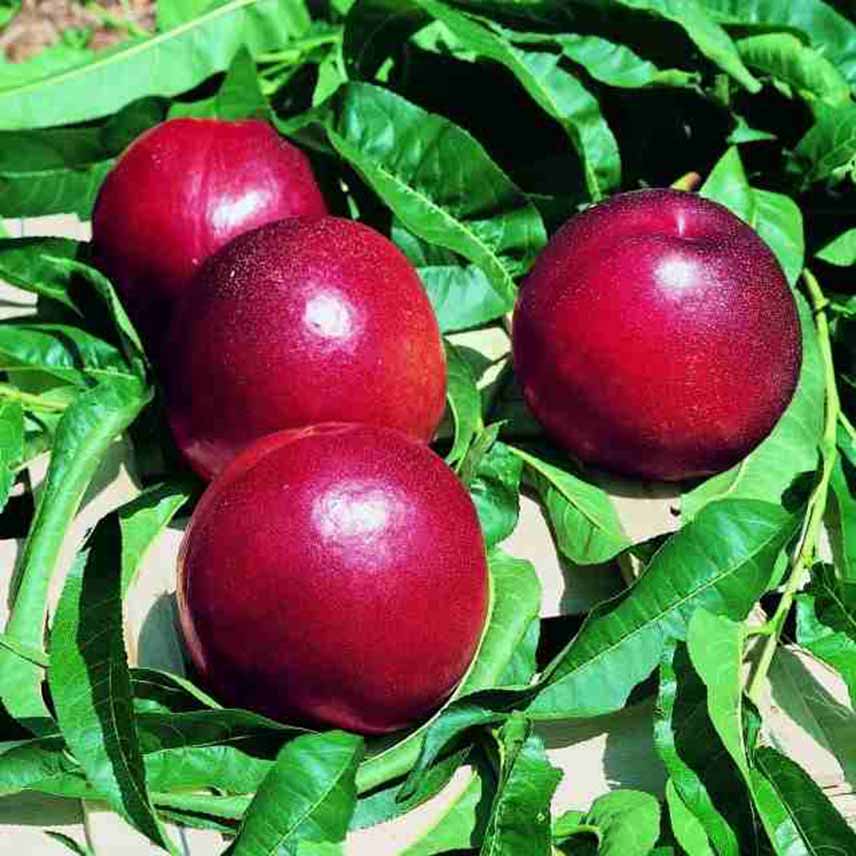
Nectarine tree ‘Honey Kist’
Note: at ripeness, fruits remain firm for several weeks, allowing you to enjoy eating them over a spreading period.
Discover other Peach and Nectarine trees
View All →Available in 1 sizes
Available in 1 sizes
Available in 1 sizes
Available in 1 sizes
Available in 4 sizes
Available in 1 sizes
Available in 1 sizes
Available in 1 sizes
Available in 1 sizes
Nectarine tree 'Sauzee King': children's favourite
Very productive, Nectarine tree ‘Sauzee King’ produces large “flat” fruits with white, juicy flesh as early as mid-July. With a majestic silhouette: 5 m tall with a 4 m spread, it will take pride of place in your large garden and/or orchard, flowering white-pink from March and producing large flattened, so-called “flat” fruits with white, very juicy, sweet and highly fragrant flesh. Nectarine ‘Sauzee King’ is very frost-hardy (down to -15°) but, as with other nectarine trees, plant it in a sheltered spot, away from draughts. This fruit is a real treat to bite into, but it can also be used in cooking.
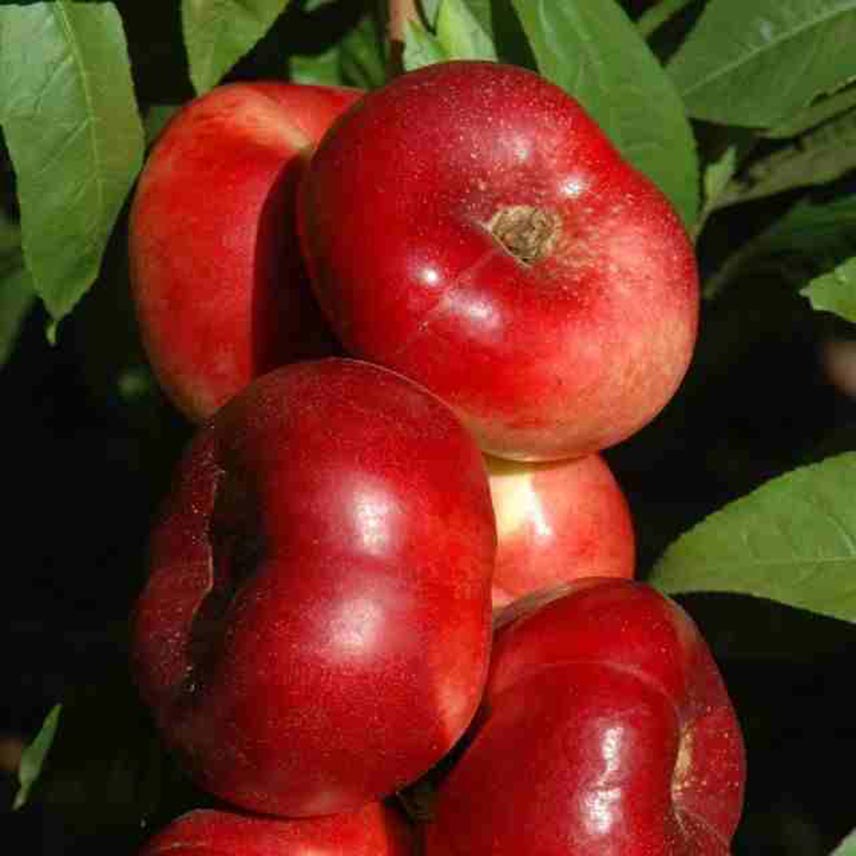
Nectarine tree ‘Sauzee King’
Lorène’s tip: getting children to eat fruit isn’t always easy. Introduce them to this nectarine: thanks to its flattened, unusual shape, the fruit fits perfectly in their small hands. They will love all the juice running down and the fruit’s sweet, delicate flavours.
You may also read
Peach leaf curlNectarine tree 'Sanguine d’Auvergne' : the original
Distinctive, nectarine tree ‘Sanguine d’Auvergne’ yields an excellent crop of outstanding flavour. Its large, blood-red fruits, firm, sweet and tangy, are ready to pick in August to be eaten fresh, cooked or even made into compote. Blood-fleshed nectarines are rarer than blood-fleshed peaches. As such, this variety is distinctive and uncommon. If you like deep crimson flesh streaked with white and that typically tangy flavour but dislike fuzzy skins, this nectarine is for you! Nectarine ‘Sanguine d’Auvergne’ reaches 6 m in height with a 4 m spread; plant in full sun, sheltered from cold winds. This variety is vigorous (down to −10°C) and very disease-resistant.
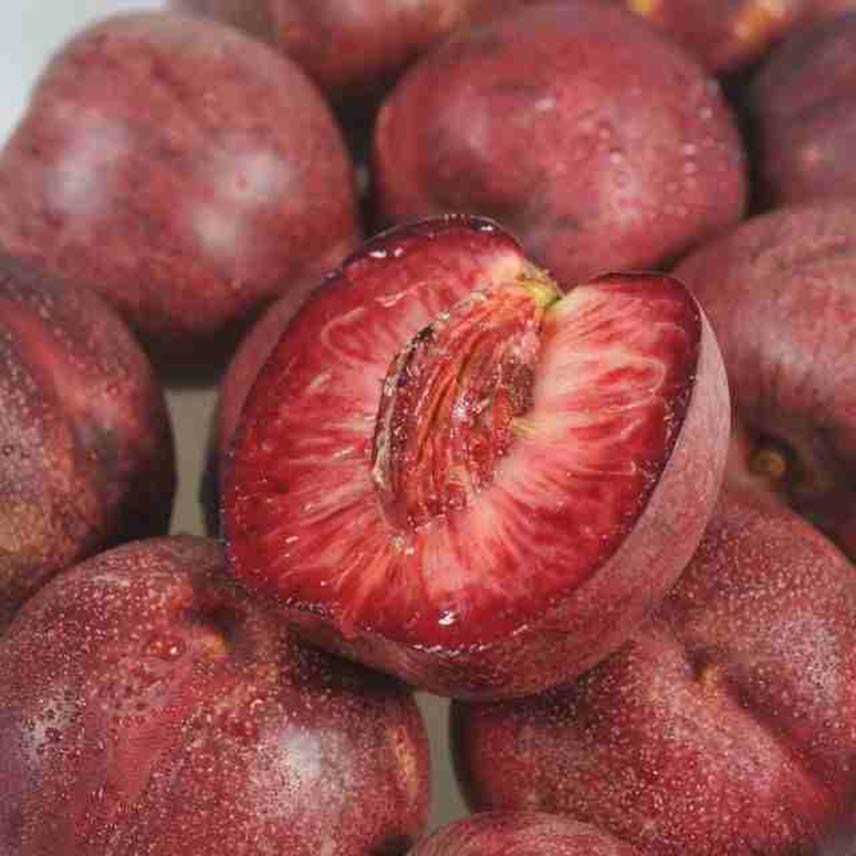
Nectarine ‘Sanguine d’Auvergne’
Lorène’s tip: Have you tried blood-fleshed nectarine jam? It’s a real treat…
Nectarine tree 'Olympio': exceptional
With its very large glossy fruits with tasty white flesh, Nectarine ‘Olympio’ is an asset in your orchard. Its large fruits have an exceptionally fruity and floral flavour. Harvest begins in mid-August and continues for several weeks. This medium-sized tree with pink flowers is very hardy and tolerates temperatures down to -15°C. It is not prone to disease. Enjoy it raw, cooked, hot or cold and why not frozen or frosted.
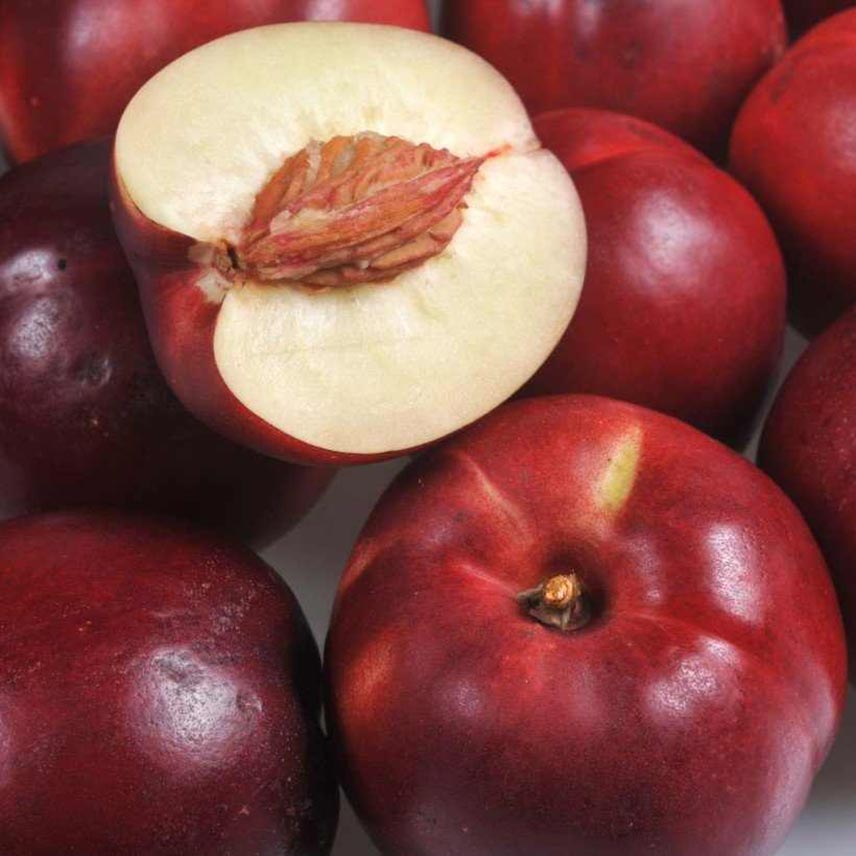
Nectarine ‘Olympio’
Peach 'Amsden': tangy
Early and vigorous, Peach ‘Amsden’ is an old variety with fuzzy fruits, dark red at ripeness and with tangy, juicy white flesh. Its early pink flowers give way to large round fruits from late June, ready to harvest in large quantities. It is not very susceptible to diseases, including peach leaf curl. The tree can reach 5 m in height and 3 m in spread at ripeness. It should be sheltered from cold winds and spared excess water. This fruit can be eaten raw or cooked, as you wish.

Peach ‘Amsden’
Lorène’s tip: this fruit is ideal cooked in wine or flambéed (holds up very well to cooking).
Peach 'Michelini': hardy
Hardy and easy to grow, Peach ‘Michelini’is a variety that can be grown in all our regions, provided soil is not too heavy and compact. Fruit of Peach ‘Michelini’ is a delight for gourmets and sweet-toothed alike, red-pink and pale yellow in colour with soft, sweet and fragrant white flesh. This late variety produces beautiful round, fuzzy fruits, 7 to 8 cm in diameter from August. At maturity it reaches 4 m in height with a 4 m spread. Plant it in a sunny spot sheltered from cold winds to help it fruit well.
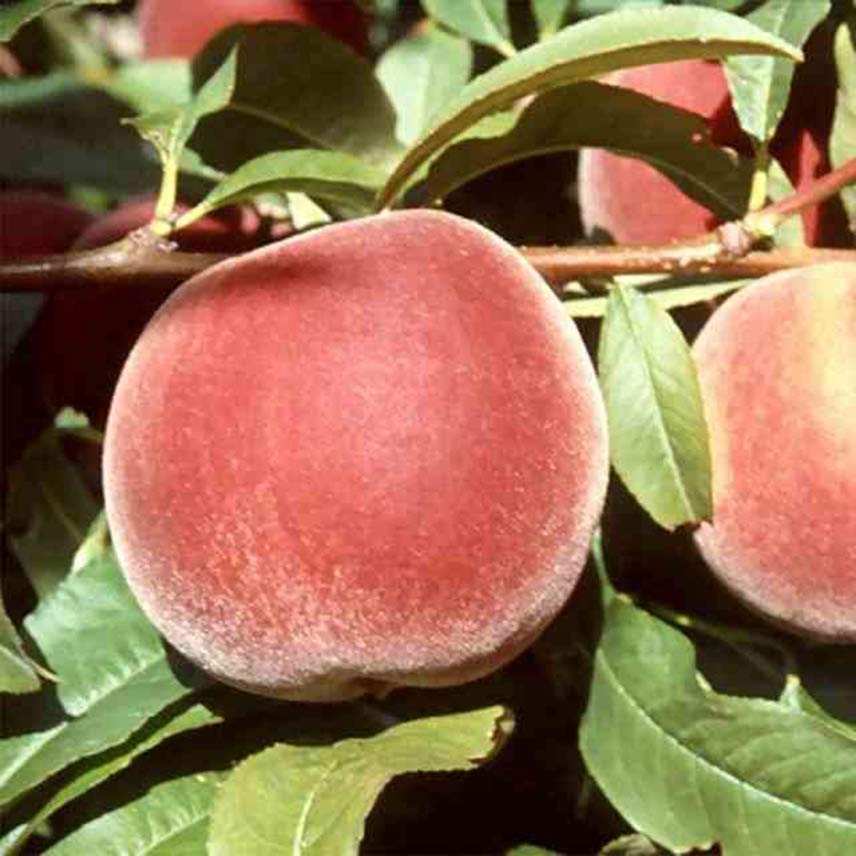
Peach ‘Michelini’
Peach 'Redhaven': orange-hued
Peach ‘Redhaven’ is an essential in any orchard worthy of the name! This mid-late variety is highly prized as a dessert peach, eaten fresh. Velvety orange skin conceals melting yellow flesh that is highly fragrant, sweet and juicy. Its semi-early pale pink flowers appear in late March, giving way to large yellow-orange to red fruits (140 to 170 g). Although hardy to -15°C, this peach tree absolutely needs a sunny position sheltered from spring frosts. Beware of prolonged periods of drought. Finally, this variety is less resistant to diseases, notably fungi that can attack the flowers. As soon as the flower buds appear, apply Bordeaux mixture.

Peach ‘Redhaven’
Lorène’s tip: Ideal in tarts and I recommend it for tarte Tatin!
Peach tree 'Sanguine de Savoie': a delightful surprise
Unique and hardy, Peach ‘Sanguine de Savoie’ is a variety that adapts to all French regions. This late variety produces flowers of pale pink from late March to early April, producing beautiful round dark-red fruits with velvety skin in August. Flesh, initially white then blood-red at ripeness, is sweet, soft, juicy, slightly tangy and very fragrant. Well suited for jams, compote or simply eaten fresh.
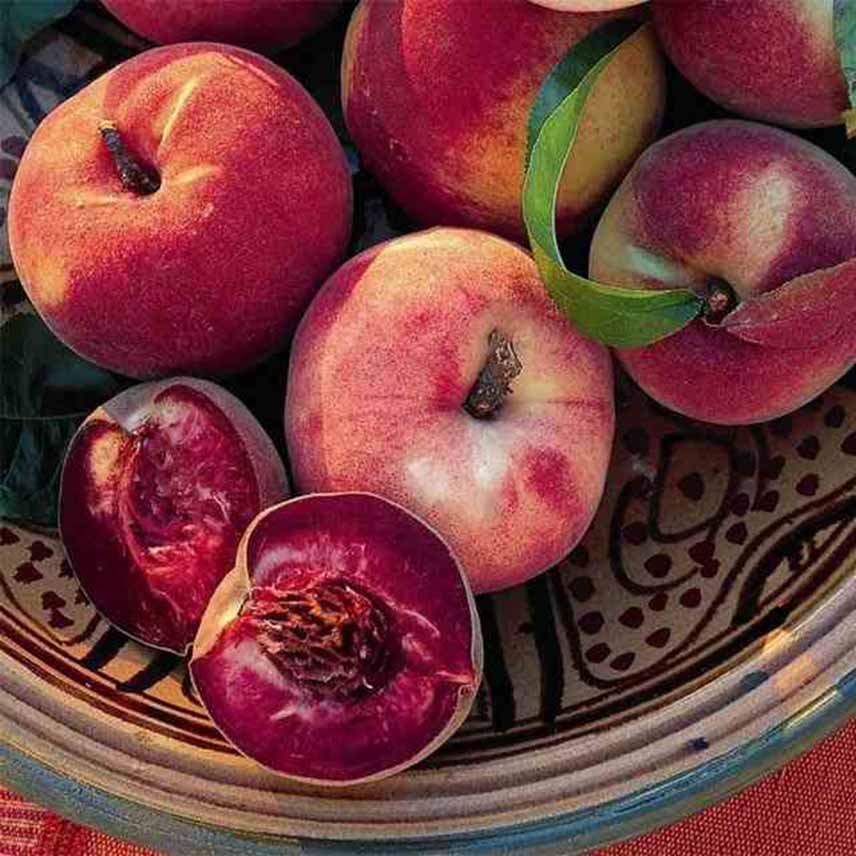
Sanguine de Savoie peach
Lorène’s tip: this peach is perfect for jars of fruit in syrup, to enjoy all year round.
Dwarf nectarine 'Nectarella': perfect in a pot
Dwarf nectarine tree ‘Nectarella’ produces large, round nectarines with red skin and yellow flesh, very juicy and sweet in August. With slow growth, it is perfectly suited to container cultivation on a balcony, a terrace or in a small garden. It reaches only 1.50 m in height when fully grown. Equally good eaten raw or cooked, its nectarines are suitable for many preparations.
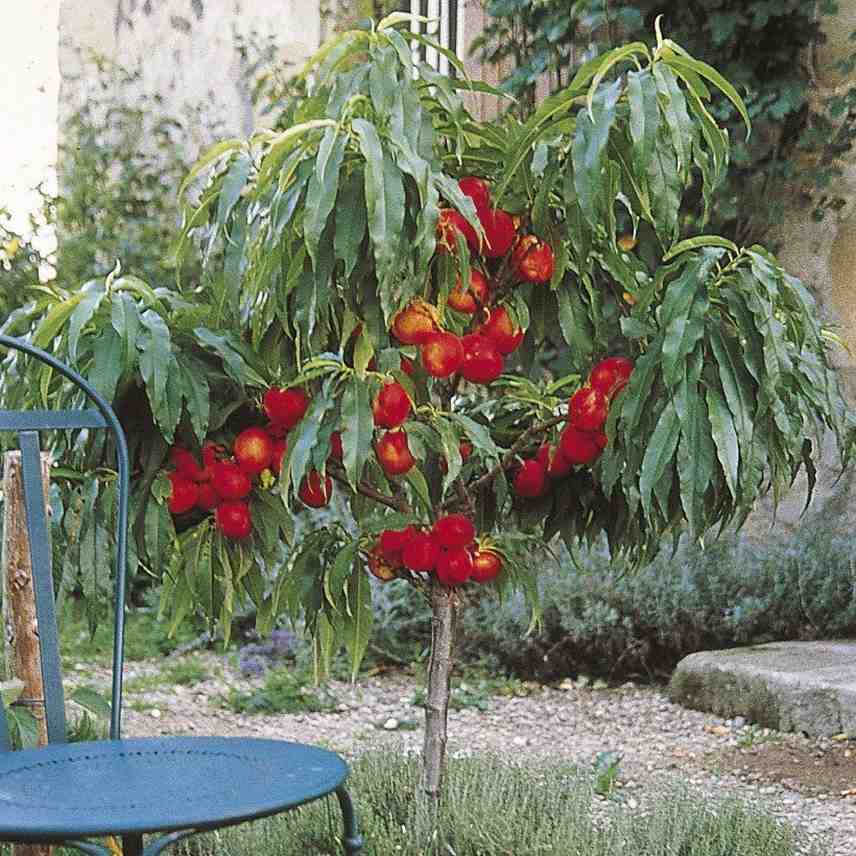
Dwarf nectarine tree ‘Nectarella’
To learn more
- Discover everything you need to know about growing peach and nectarine trees: planting, pruning and maintenance
- Explore our wide range of peach and nectarine trees
- Subscribe!
- Contents
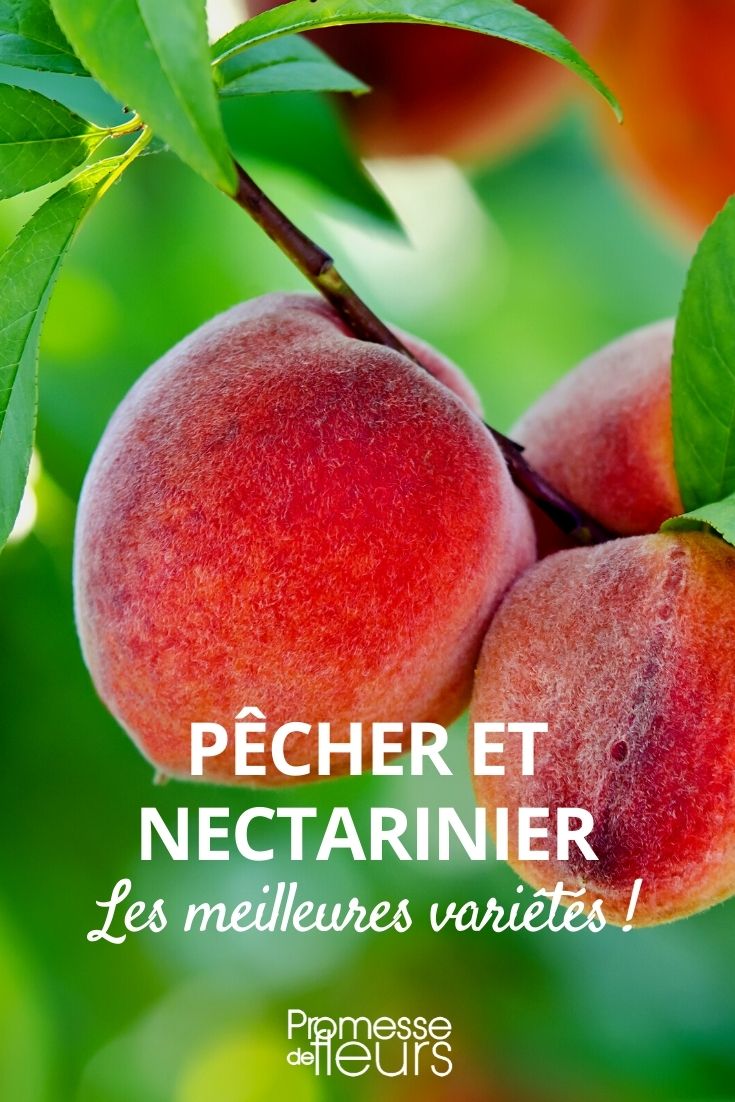































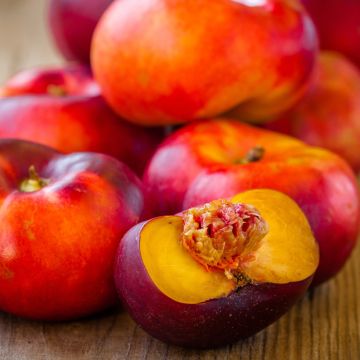
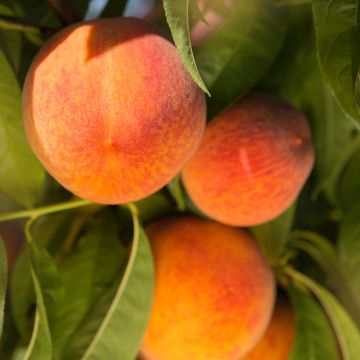
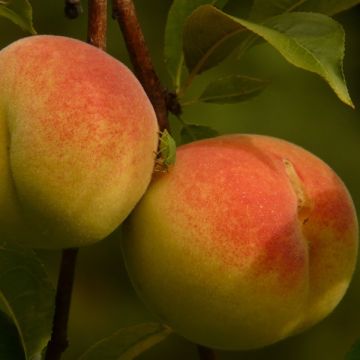
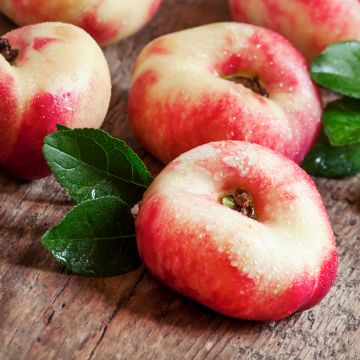
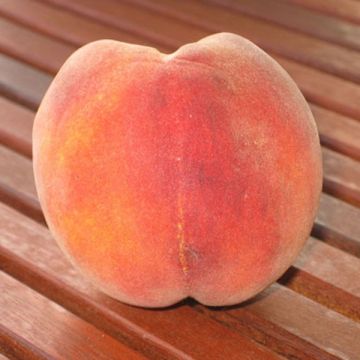
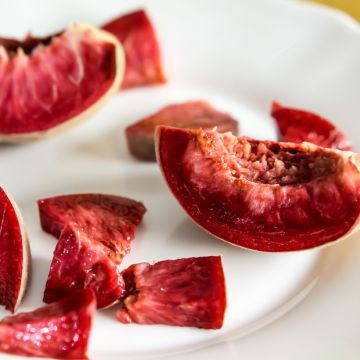

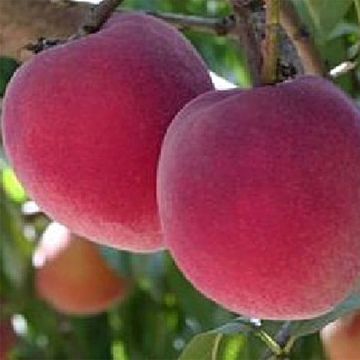
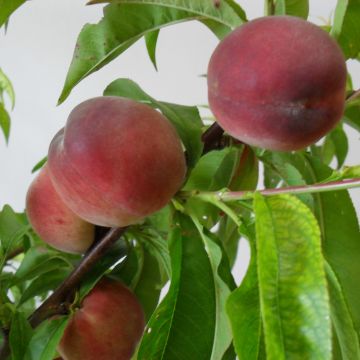
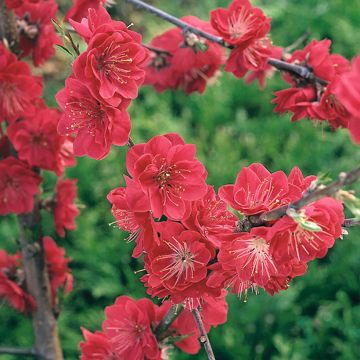
Feedbacks